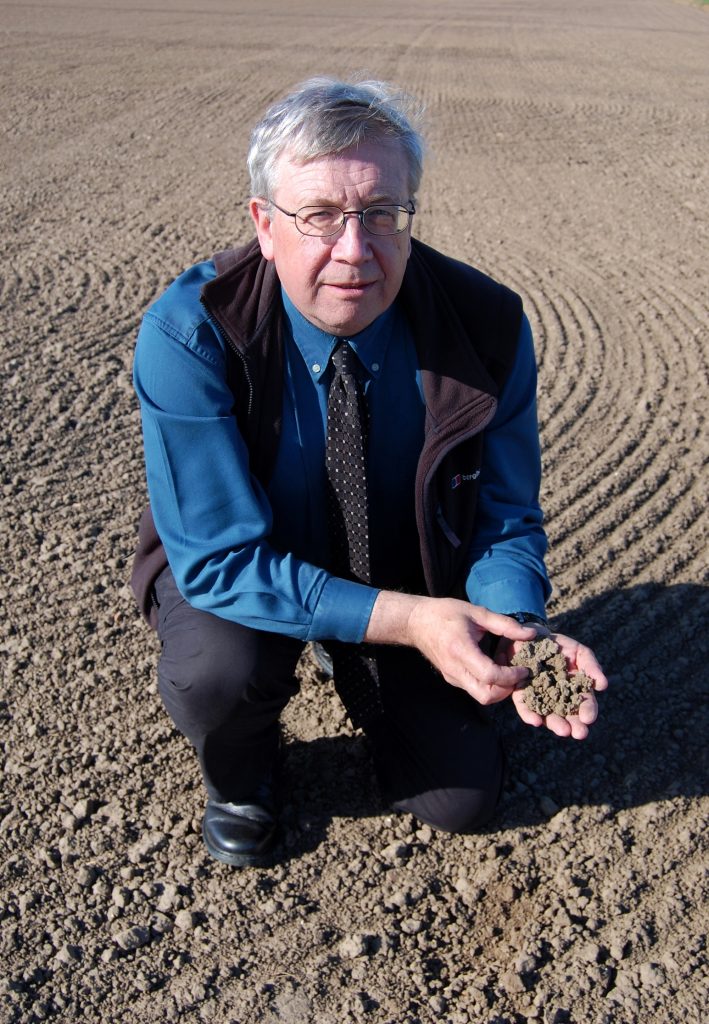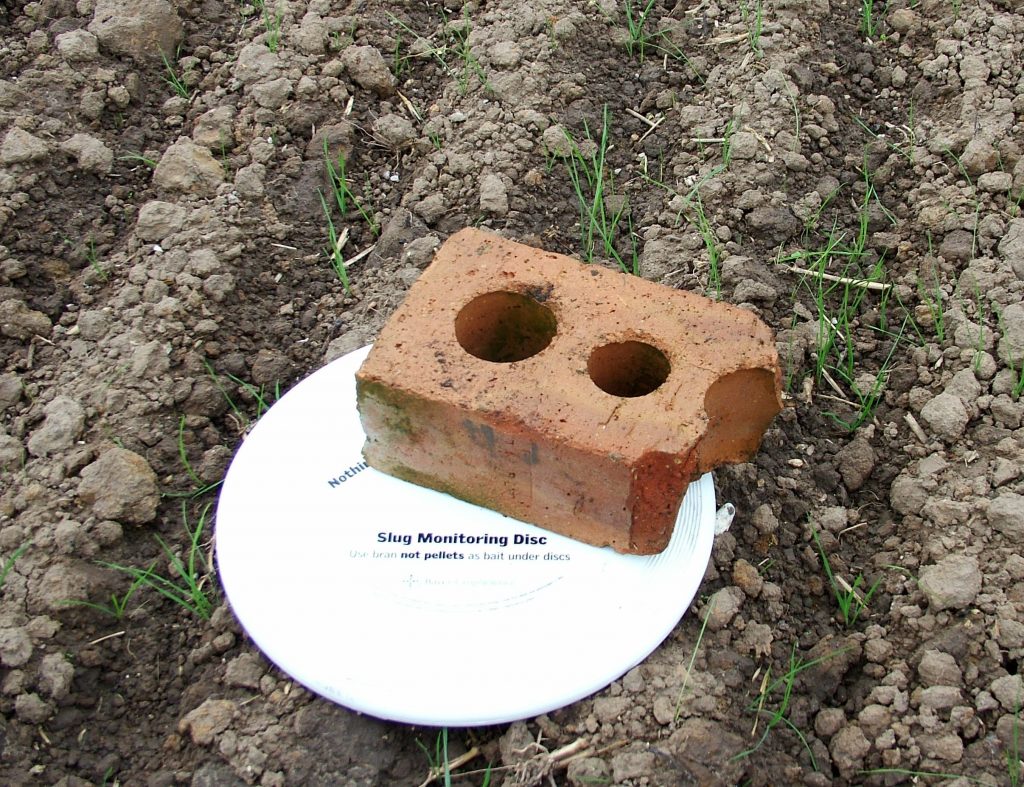It’s critical to take care using metaldehyde-based slug pellets
20th September 2016
Wet weather this summer in many parts of the UK has led to large slug populations and means growers need to be extra vigilant in monitoring crops for damage from
Wet weather this summer in many parts of the UK has led to large slug populations and means growers need to be extra vigilant in monitoring crops for damage from slugs to ensure crops are protected during early stages of growth.
The use of metaldehyde-based slug pellets last autumn led to exceedances of the Drinking Water Directive limit of 0.1 ppb in many areas and this has highlighted the need for close adherence to industry stewardship guidelines on metaldehyde use this coming autumn, says Dr David Ellerton, Hutchinsons technical development director.

Dr David Ellerton.
“Although the overall threat from slugs is potentially high this autumn, field monitoring and judging the risk of slug damage on a field by field basis remains critical to avoid unnecessary pellet applications, whilst still protecting crops from slug attack.”
Ideally, bait trapping for potential slug problems in oilseed rape should commence in the previous crop and also in stubbles for cereals, he advises.
“The thresholds for oilseed rape are four or more slugs per trap in the previous crop and one slug per trap in the previous stubble. The cereal threshold is four or more slugs per trap. However, trapping is only an effective means of monitoring slug activity when the soil surface is moist and slugs are active.”
“Crops are most vulnerable to slug damage in the first four weeks of growth – the cut off point for monitoring cereals is the start of tillering and for oilseed rape the four leaf stage.”
He points out that a risk assessment for slug damage, including the current and previous crops, field history, soil type, seedbed quality, weather conditions and planting date, can be used in conjunction with trapping to judge the need for chemical control.
“Slug pellets will continue to be the most important means of controlling slugs this autumn, ideally aiming for a minimum of about 40 pellets per square metre, but other measures including seedbed cultivations with adequate consolidation, seed dressings and depth of drilling can have a significant impact.”
There are now only two main active ingredients available for slug control – metaldehyde and ferric phosphate. For many years, metaldehyde has been the main active ingredient that farmers chose to use for slug control. Nevertheless it needs to be managed carefully to avoid problems with drinking water contamination.
An industry led initiative coordinated by the Metaldehyde Stewardship Group (MSG) has established clear guidelines for operators to follow – the aim being to avoid this product being restricted or possibly withdrawn from use completely.
Metaldehyde has four routes by which it can enter water:
• Direct – e.g. inadvertently spreading pellets into watercourses
• Point source – e.g. spills on hard surfaces which eventually get into drains
• Surface run off from fields following heavy periods of rain
• Water moving through the soil that carries metaldehyde with it into the field drainage system.
Scientific studies have highlighted field drainage as the main route by which metaldehyde reaches water courses highlights Dr Ellerton. “Moisture moving down the soil profile will take metaldehyde into the drainage system and from there into ditches and streams.”
“In order to limit water contamination, the annual maximum metaldehyde dose for the calendar year has been set at 700g of active ingredient per hectare and a maximum total dose of 210g ai/ha between 1st August and 31st December, the period when there is the greatest risk of metaldehyde peaks occurring.”
MSG best practice application guidelines
• Use minimum active per hectare to avoid drainage and run-off losses
• Maximum application rate 210g metaldehyde/ha*
• Maximum total dose from 1st August to 31st December: 210g metaldehyde/ha* for additional protection of water, suppliers/ BASIS advisors may recommend rates reduced to 160g a.s./ha or less*
• Maximum total dose rate: 700g metaldehyde/ha/calendar year*
• No pellets to be applied within 6 metres of a watercourse
• Do not apply when heavy rain is forecast
• If drains are flowing do not apply metaldehyde based slug pellets
*from any combination of metaldehyde products
A decision support tool to identify high risk situations for water contamination from a range of active ingredients including metaldehyde is the ‘Wate Aware’ App which has been developed by Adama and has now been amended and upgraded for autumn 2016 to include SlugAware.

Monitor slug levels ahead of planting.
It helps growers to assess the risk of water pollution from key products based on current and future weather forecasts, soil type and water deficit at specific locations and is available to download onto Apple or Android smart phones and tablets .This helps growers to identify the potential risk of water contamination from chemical applications and should be used to help avoid peaks appearing in water from metaldehyde and a range of oilseed rape herbicides.
Helping water companies
An additional way in which Hutchinsons agronomists are helping to reduce the movement of metaldehyde to watercourses is to provide information to water companies on molluscicide application timing, enabling them to predict high risk periods for metaldehyde reaching water.
“Those companies which abstract water from rivers into reservoirs are then able to only divert water when the risk of metaldehyde peaks are low, thereby reducing exceedances and the likelihood of restrictions on the use of metaldehyde in future, “ says Dr Ellerton.
“Subsequent to requests from water companies for such information, the Metaldehyde Stewardship Group (MSG) launched the ‘Get Pelletwise!’ Agronomic Update system last autumn, providing a number of water companies with weekly electronic reports from agronomists. “
“The reports detail regional agronomic information to help them anticipate metaldehyde usage and inform water abstraction decisions. This initiative will be extended this autumn to cover some 14 water companies, an increase of some 20% on last season and will look to include over 40 counties throughout the UK.”
“Currently the MSG and a number of water companies have set up metaldehyde pilot catchments in which high risk fields have been identified. Farmers with these fields are being requested to refrain from applying metaldehyde in order to protect water and levels in nearby water sources will be monitored to assess the impact of these measures. “
“There have been encouraging results to date, although the success or otherwise is largely dependent on the involvement of farmers in the catchment.”
In the meantime, he points out that more needs to be done to ensure there is no repeat of metaldehyde peaks appearing in water this autumn.
“Clearly minimising the amount of active ingredient applied to fields will make a significant difference. Selection of high quality pellets to reduce breakdown and minimise dust during application may also help. Yet one of the key methods would be switching to other products with different modes of action, where there is a high risk to water.”
Alternative product – ferric phosphate
The only other viable alternative for broad acre crops now is ferric phosphate which was launched in the arable market in 2009, the first new molluscicide for 30 years, he adds.
“Its key benefits are that it is as effective as metaldehyde, but is very specific to target only slugs and snails and so presents no threat to wildlife. It is also virtually insoluble in water and therefore may be used in situations at high risk of metaldehyde entering water; such as vulnerable water catchment areas, headland treatments adjacent to watercourses (where other pellets may not be used), and poorly drained heavy soils.”
“It is important to remember that, unlike metaldehyde, slugs which ingest ferric phosphate do not die on the surface of the soil where they can easily be found, but will crawl underground to die. However, they will rapidly stop feeding and so the crop will quickly recover following treatment.”
Preserving active ingredients
In summary if growers adopt sustainable slug control policies of only applying high quality slug pellets where risk of slug damage is high, abiding by the MSG guidelines and switching into an alternative mode of action in situations where there is a risk of metaldehyde entering water, it should be possible to preserve the remaining molluscicide active ingredients in the market place, contends Dr Ellerton.
“However, it is crucial that the agricultural industry joins together in adopting best practice strategies to minimise the risk of metaldehyde reaching water courses and so maintain this vital active ingredient in the battle against slugs.”
